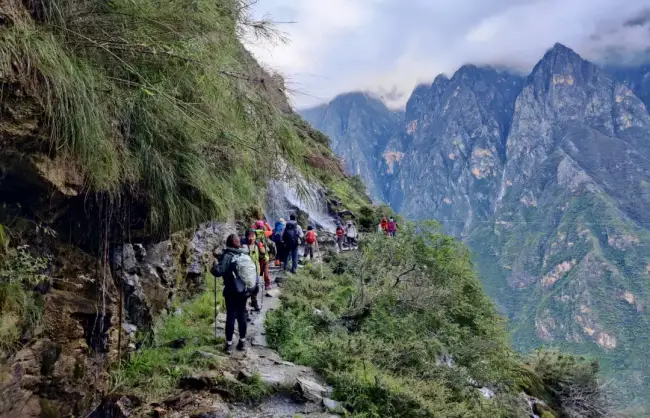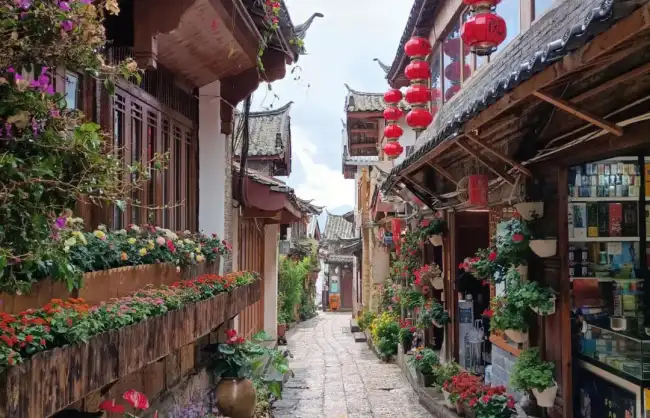Yunnan is a province in southwestern China. It borders Vietnam, Laos, and Myanmar to the west and south. In recent years, it has become one of the most popular places for tourism among people from China and other Asian countries. This article will help you understand why that is by listing the top 6 reasons to visit Yunnan during your China tour, as well as what to do and see in Yunnan.
Yunnan has some of the most fabulous natural beauty in China, well-preserved ancient towns and villages, a rich ethnic minority culture, brilliant arts and crafts, tasty local foods, and nice weather all year round. The most popular destinations for traveling to Yunnan include Kunming, Lijiang, Dali, Shangri-La, and Xishuangbanna.
1. Fabulous Natural beauty
Yunnan is a paradise for hiking and photography tours because It is home to a variety of natural landforms such as deep gorges, towering karst formations, rainforest, rice terraces, beautiful lakes, and snow-capped mountains.
Mt. Cangshan and Erhai Lake are two most iconic places to visit in Dali, Yunnan. Cangshan Mountain is a magnificent mountain range with many peaks and streams. You can hike up there to see temples, waterfalls, wildflowers, forests, and many rare plants and animals.
Erhai Lake is the second largest lake in Yunnan with its shape resembling an ear (“er” in Chinese). Take a boat ride to see the islands and villages on the lake, or cycle around the lake at your own pace. Erhai Lake is also popular among birdwatchers visiting Yunnan, as it is a gathering place of black-headed gulls from Siberia, egrets, herons, cormorants, ducks, geese, and kingfishers.
Yuanyang Rice Terraces is a part of the UNESCO-listed Honghe Hani Rice Terraces along the slopes of the Ailao Mountains. The area has been inhabited by Hani people for over 1,300 years. When the thousands of terraces are filled with water in winter and early spring, they look like mirrors reflecting the sunlight in different colors.
The Jade Dragon Snow Mountain in Lijiang is always covered in snow. It is a sacred mountain for the local Naxi people. Its 13 towering peaks look like a flying dragon from afar, hence its name. It is a popular destination for hikers visiting Yunnan to see stunning glaciers, meadows, and forests.
Tiger Leaping Gorge is one of the most famous hiking routes and deepest gorges in China and even the world. The trail stretches about 14.3 miles (23 kilometers). You’ll see Jinsha River winding its way in the gorge, snow mountains, rice-terraced fields, and local Naxi ethnic villages.

Tip for hikers and photographers:
Some of these attractions can be difficult to navigate and some hiking trails are quite challenging. It is recommended that you book a Yunnan private tour or small group tour for safety and a better travel experience.
Recommended Tours:
- 3 Days Yunnan Tiger Leaping Gorge Hiking Tour
- 7 Days Shangri-La Hiking Tour: Abuji, Thousand Lakes Mountain
2. Ancient Towns and Villages
Due to Yunnan’s location among the mountains, it used to be a remote province in China with little public transportation and relatively slow economic growth. Luckily, that allowed the preservation of many ancient towns and villages in Yunnan with rich and unique local culture.
The Ancient Town of Lijiang is a UNESCO World Heritage Site dating back to the late Song Dynasty. The town is known for its distinctive architecture and the rich culture of many ethnic groups. It consists of Dayan Ancient Town, Baisha Ancient Town, and Shuhe Ancient Town.
Dali Ancient Town on the shores of Erhai Lake, embodies the culture of the Bai ethnic minority. The town was once the capital of the Nanzhao and Dali Kingdoms and can be dated back to over 1,300 years ago. You’ll see traditional Bai architecture with colorful paintings.
Recommended Tours:
- 5 Days Yunnan Tour of Lijiang and Shangri-La
- 7 Days Yunnan | Dali+Lijiang+Shangri-La Best Highlights Tour

3. Rich Ethnic Minority Culture
There are 25 different ethnic minorities in Yunnan, making another good reason to visit Yunnan. Most of them have their own languages and dialects, and some have their own written languages, such as the Naxi, Yi, and Zhuang people. You’ll notice their own culinary traditions at the weekly markets, where locals gather to sell and buy things or just to have a chat. Many of them have different even religions as well.
In different seasons, you might encounter different ceremonies and festival celebrations. The Yi minority celebrates the Torch Festival. The Bai has the March Fair. The Dai has the Water Splashing Festival. Take a Yunnan minority tour to learn about their cultures and lifestyles.
Apart from what’s been mentioned, the Naxi have their unique Dongba culture, recognized by UNESCO as a World Cultural Heritage. Many of them live in and around Lijiang. The Mosuo is known as the world’s last matriarchal society. They live around the Lugu Lake near Lijiang.
Recommended Tours:
- 6 days Yunnan In-depth Minority Tour in Kunming – Jianshui – Yuanyang – Kunming
- 8 Days Classic Yunnan Minority Tour of Kunming-Dali-Lijiang-Shangri-La

4. Unique Yunnan Flavors
Yunnan cuisine is special for a number of reasons to visit Yunnan. First, because of its cultural diversity, Yunnan food combines styles of Han Chinese and Bai, Yi, Dai, Naxi, and Haxi ethnic groups.
Second, Yunnan’s location on the southwestern border of China allows a blending of flavors from other southeastern Asian countries, like Vietnam, Thailand, and Laos. Finally, due to Yunnan’s unique landforms, there are many natural delicacies and ingredients that can’t be found anywhere else.
In general, Yunnan food has a spicy and sour flavor. The sourness comes from lemons, quinces, and plums. Many dishes are prepared with fresh ingredients from the wild. Many flowers are used in cooking, such as taro, pumpkin, azalea, and banana blooms.
Some of the popular dishes to try during your Yunnan tour include steamed pot chicken, fried rice-flour cake, crossing-the-bridge rice noodles, Pu’er tea, and wild mushroom hot pot.

5. Arts and Crafts
Another thing you mustn’t miss when you visit Yunnan is the arts and crafts made by local artisans of different minority groups. Dali has handmade wool mats, bamboo baskets, and cheese. In Lijiang, there are artists skilled in embroidery and copperware. And in Shangri-La is famous for its pottery. You’ll find markets where artisans sell their works and perform their magic in front of you.
6. Pleasant Climate
With no particularly cold winter or hot summer, Yunnan has comfortable weather all year round. Spring and autumn in Yunnan are usually peak tourist seasons. Winter is popular among hikers who wish to see glaciers and mountains covered in snow.
Spring from March to May is the best time to visit Yunnan to catch mountain wildflowers, such as the seas of yellow rape flowers in Luoping, and the cherry blossoms around Cangshan Mountain and Erhai Lake. It is also the time for the Water-Sprinkling Festival of the Dai people in Xishuangbanna, which usually takes place in April.
Autumn in Yunnan, from September to November, is the best season for outdoor activities. Visiting Yunnan in winter will also prove to be a wonderful experience with mountains and ancient villages covered in white along the hiking trails.









